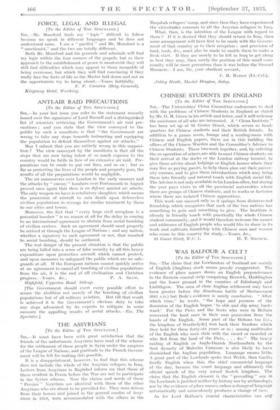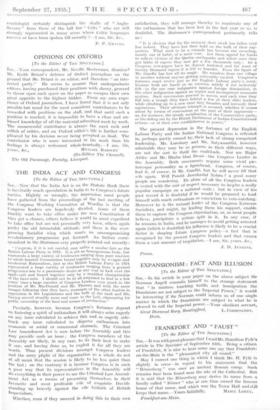WAS BALFOUR A CELT ?
[To the Edith r of THE SPECTATOR.] Sin,—The claim that the Lowlanders of Scotland are mainly of English (Anglian) stock seems grossly exaggerated. The evidence of place mimes shows an English preponderance in the Eastern coastal strip comprising Berwick, Haddington and the lower ground in the counties of Edinburgh and Linlithgow. The area of close Anglian settlement may have been greater before the disastrous battle of Nectausinere (685 A.n.) but Bede's evidence is surely conclusive. " After which time," he wrote, " the hope and prowess of the dominion of the English began' 'to ebb and slip away back- ward.' For the Picts and the Scots who were in Britain recovered the land once in their own possession from the hands of the English. Some part of the Britons too [i.e., the kingdom of Strathclyde] won back their freedom which they hold for these forty-six years or so ; among multitudes of the English who were slain with the sword or enscrfed or who fled from the land of the Picts, . . . &c." The heavy raiding of English or Anglo-Danish Northumbria by the Scot dynasty of Malcolm Canmore is also likely to haVe diminished the Anglian population. Language means little.. A great part of the Lowlands spoke first Welsh, then Gaelic,. finally English when this, the chief commercial language of the day, became the court language and ultimately the. official speech of the very mixed Scotch kingdom. The, claim that the English element is the " prevailing " one in the Lowlands is justified neither by history nor by archaeology, nor by the evidence of place names, unless a change of language automatically and miraculously produces a change of race.
AS for Lord Balfour's cranial characteiistics can any
craniologist certainly distinguish the skulls of " Anglo- Saxons " from those of the tall fair " Celts " who are still strongly represented in many areas where Celtic languages survive or have been spoken till recently ?—I am, Sir, &e.,
P. I'. GRAVES.















































 Previous page
Previous page